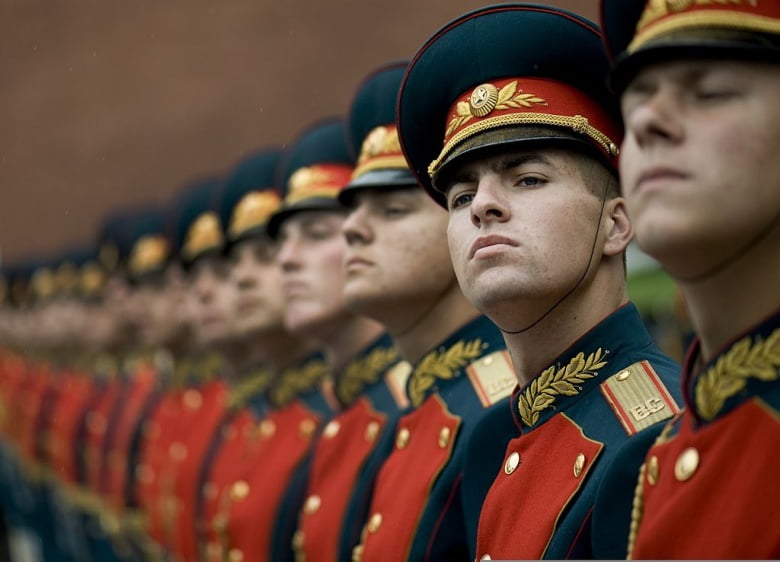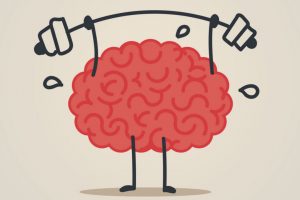“People will divide into “events” over the question of a new colossal canal, or the distribution of oases within the Sahara (such a question will exist too), over the regulation of the climate and the weather, over a new theatre, over chemical hypotheses, over two competing tendencies in music, and over a excellent system of sports activities.”
– Leon Trotsky, Literature and Revolution
At the start of the 20th-century, the game had no longer flourished in Russia to the equal volume as in international locations and Britain. The majority of the Russian populace were peasants, spending hours every day on lower back-breaking agricultural labor. Leisure time turned into hard to return to using, or even then, humans were regularly exhausted from their work. Of course, people did nonetheless play, taking part in such conventional games as laptops (similar to baseball) and gorodki (a bowling recreation). A smattering of sports activities clubs existed inside the large towns; however, they remained the hold of society’s richer contributors. Ice hockey was starting to grow in recognition. The upper echelons of society were keen on fencing and rowing, using high-priced gadgets the general public would never have been able to afford.
In 1917 the Russian Revolution grew to become the world upside down, inspiring hundreds of thousands of humans with its vision of a society constructed on cohesion and human need fulfillment. The process unleashed an explosion of creativity in artwork, track, poetry, and literature. It touched each region of people’s lives, along with the games they performed. Sport, however, was away from being a concern. The Bolsheviks, who had led the revolution, had been faced with civil war, invading armies, extensive famine, and a typhus epidemic. Survival, now not entertainment, turned into the order of the day. However, at some point in the early part of the 1920s, earlier than the goals of the revolution were overwhelmed with the aid of Stalin, the debate over a “pleasant device of sports activities” that Trotsky had expected did certainly take area. Two companies to address the query of “bodily subculture” have been the hygienists and the Proletkultists.

Hygienists
As the call implies, the hygienists had been a group of doctors and fitness care experts whose attitudes have been knowledgeable via their scientific expertise. Generally speaking, they had been important of the game, concerned that its emphasis on competition placed individuals prone to harm. They were similarly disdainful of the West’s preoccupation with running faster, throwing further, or leaping better than ever. “It is completely pointless and unimportant,” said A.A. Zikmund, head of the Physical Culture Institute in Moscow, “that anyone set a brand new international or Russian file.” Instead, the hygienists encouraged non-competitive physical interests – like gymnastics and swimming -as approaches for humans to stay healthy and loosen up.
For a period of time, the hygienists influenced Soviet coverage on questions of physical tradition. It was on their advice that positive sports activities had been prohibited, and soccer, boxing, and weight-lifting were all unnoticed from the program of events at the First Trade Union Games in 1925. However, the hygienists were a ways from unanimous of their condemnation of sport. V.V. Gorinevsky, as an example, turned into the advice of playing tennis which he saw as an excellent physical exercise. Nikolai Semashko, a doctor and the People’s Commissar for Health went tons similarly, arguing that recreation turned into “the open gate to bodily tradition,” which “develops the kind of will-electricity, electricity, and skill that need to distinguish Soviet people.”
Proletkult
Compared to the hygienists, the Proletkult movement becomes unequivocal in its rejection of ‘bourgeois’ recreation. Indeed they denounced anything that smacked the old society, be it in artwork, literature, or song. They noticed the ideology of capitalism woven into the material of the game. Its competitiveness set people in opposition to every different, dividing human beings by using tribal and country-wide identities. The physicality of the video games positioned unnatural strains at the bodies of the gamers.
Proletkultists argued for brand spanking new, proletarian types of play in the game region, founded on the ideas of mass participation and cooperation. These new video games were often large theatrical displays searching greater like carnivals or parades than the sports we see today. Contests had been refrained from because they had been ideologically incompatible with the brand new socialist society. Participation changed spectating. Every event contained an awesome political message, as is apparent from some of their names: Rescue from the Imperialists; Smuggling Revolutionary Literature Across the Frontier; and Helping the Proletarians.

Bolsheviks
It might be easy to characterize the Bolsheviks as being anti-sports. Leading contributors to the birthday party have been pals and comrades with folks that had been maximum crucial of recreation during the debates on bodily lifestyle. Some of the main hygienists have been near Leon Trotsky, whilst Anatoli Lunacharsky, the Commissar for the Enlightenment, shared many views with Proletkult. The birthday celebration’s mindset to the Olympics is typically given as evidence to help this anti-game claim. The Bolsheviks boycotted the Games, arguing that they “deflect workers from the class conflict and teach them for imperialist wars.” Yet, in reality, the Bolshevik’s attitudes closer to recreation have been particularly greater complicated.
They regarded participation within the new physical lifestyle as being enormously vital, an existence-maintaining interest allowing humans to revel in the liberty and motion in their very own bodies. Lenin became satisfied that activity and exercise had been crucial parts of a well-rounded existence. “Young people, in particular, want to have a zest for life and be in desirable spirits. Healthy recreation – gymnastics, swimming, trekking, all manner of physical workout – have to be blended as plenty as possible with a spread of highbrow pastimes, observe, analysis, and research… Healthy our bodies, healthful minds!”
Unsurprisingly, in the aftermath of the revolution, recreation would play a political role for the Bolsheviks. Facing inner and outside threats that might decimate the operating class, they noticed the game to improve the fitness and health of the population. As early as 1918, they issued a decree, On Compulsory Instruction within the Military Art, introducing bodily training to the training device.
This anxiety among the beliefs of a future physical subculture and the urgent issues of the day were glaring in a decision handed by way of the Third All-Russia Congress of the Russian Young Communist League in October 1920:
“The bodily lifestyle of the younger era is a critical detail inside the overall system of the communist upbringing of younger people, aimed at growing harmoniously evolved humans, innovative residents of communist society. Today physical way of life also has direct, realistic pursuits: (1) making ready young human beings for paintings; and (2) preparing them for military defense of Soviet electricity.”
The sport would also play a function in other regions of political paintings. Before the revolution, the liberal educationalist Peter Lesgaft noted that “social servitude has left its degrading imprint on women. Our venture is to free the lady frame of its fetters”. Now the Bolsheviks attempted to put his ideas into practice. Women’s position in society had already been significantly stepped forward through the legalization of abortion and divorce. Still, a game can also play a position using more and more bringing ladies into public existence. “It is our urgent undertaking to draw women into recreation,” said Lenin. “If we can attain that and get them to make full use of the solar, water, and clean air for fortifying themselves, we will convey a whole revolution in the Russian way of life.”
And recreation has become another way of conveying the ideals of the revolution to the working training of Europe. The employee-game movement stretched across the continent, and millions of workers were individuals of sports activities clubs run mainly by way of reformist organizations. The Red Sports International (RSI) changed into formed in 1921 with the explicit purpose of connecting with those people. The RSI (and the reformist Socialist Worker Sports International) held some of Spartakiads and Worker Olympics in competition to the official Olympic Games through the subsequent decade. Worker-athletes from throughout the globe could come collectively to participate in a whole variety of events, including processions, poetry, artwork, and competitive recreation. There changed into none of the discrimination that marred the ‘proper’ Olympics. Men and girls of all colorations have been eligible to take part irrespective of potential. The effects have been very tons of secondary significance.

So, were the Bolsheviks anti-game? They virtually did no longer appear to move as some distance as Proletkult’s fervent ideological opposition and, as we have seen, had been prepared to utilize game in the pursuit of wider political goals. No doubt there had been many individual Bolsheviks who despised sports activities. Equally, many could have greatly loved them. Indeed, because the British secret agent Robert Bruce Lockhart found, Lenin himself turned into an eager sportsman: “From boyhood, he was keen on shooting and skating. Always an exquisite walker, he became an eager mountaineer, an active cyclist, and an impatient fisherman.” Lunacharsky, despite his affiliation with Proletkult, extolled the virtues of both rugby union and boxing, hardly ever the maximum benign of modern-day sports activities.
This isn’t always to say that the celebration turned into an uncritical ‘bourgeois’ game. They tackled the worst excesses of recreation under capitalism. The emphasis on competition was eliminated, a contest that risked extreme injury to the contributors was banned, the flag-waving nationalist trappings endemic to fashionable sport disappeared, and the games human beings performed had been no longer dealt with as commodities. But the Bolsheviks were by no means overly prescriptive in their evaluation of what bodily way of life must appear to be.
The function of the Bolsheviks in the ones early days is possibly high-quality, summarised with Trotsky’s aid within the quote that opens this chapter. It changed into no longer for the birthday party to decide what constituted the “first-rate system of sports activities” or produce the ideal line for the running magnificence to follow. Rather it turned into for the mass of humans to talk about and debate, experiment, and innovate, and in that technique create their own sports activities and video games. Nobody ought to foresee exactly what the play of a destiny socialist society would be like, but similarly, no one may want to doubt that the need to play might assert itself. Trotsky said, “The longing for entertainment, distraction, sightseeing, and laughter is the maximum legitimate of human nature.”
Stalinism
The hopes of the revolution died, alongside heaps of antique Bolsheviks, with the upward push of Josef Stalin. The collectivist ideals of 1917 have been buried, changed by exploitation and brutal repression. Internationalism was jettisoned in favor of “socialism in one united state of America.” As the values and imperatives of the society changed, so too did the individual of the united states of America’s physical subculture. By 1925 the Bolsheviks had already grown to become closer to an extra elitist model of the sport. Around this time, Stalin is mentioned to have said: “We compete with the bourgeoisie economically, politically, and not without achievement. We compete anywhere feasible. Why not compete in the game?” Team sports activities reappeared, entire with capitalist fashion league and cup structures. Successful sportspeople have been held up as heroes within the Soviet Union, and the search for information resumed. Many of the hygienists and Proletkultists who had dared to dream of recent physical lifestyle forms perished in the purges.
Eventually, recreation has become a proxy for the Cold War. In 1952 the Soviet Union became re-included into the Olympic movement, ensuring that the metal desk at every Games has become a degree of East and West’s relative power. As the united states changed into inexorably pressured into financial, political, and navy opposition at the global level, it also drew into sporting opposition with the West.
Just as it’d be a mistake to decide the Russian Revolution’s beliefs by using the horrors of Stalinism, we should now not permit the latter days of the Soviet game to difficult to understand the ones first-rate early experiments in physical culture. Sport in Russia may additionally have ended as a steroid-improved cartoon; however, how a long way eliminated that become from the imaginative and prescient of Lenin when he stated: “Young men and women of the Soviet land need to live existence superbly and to the overall in public and private lifestyles. Wrestling, work, look at, sport, making merry, singing, dreaming – these are matters younger humans ought to make the maximum of.”


















